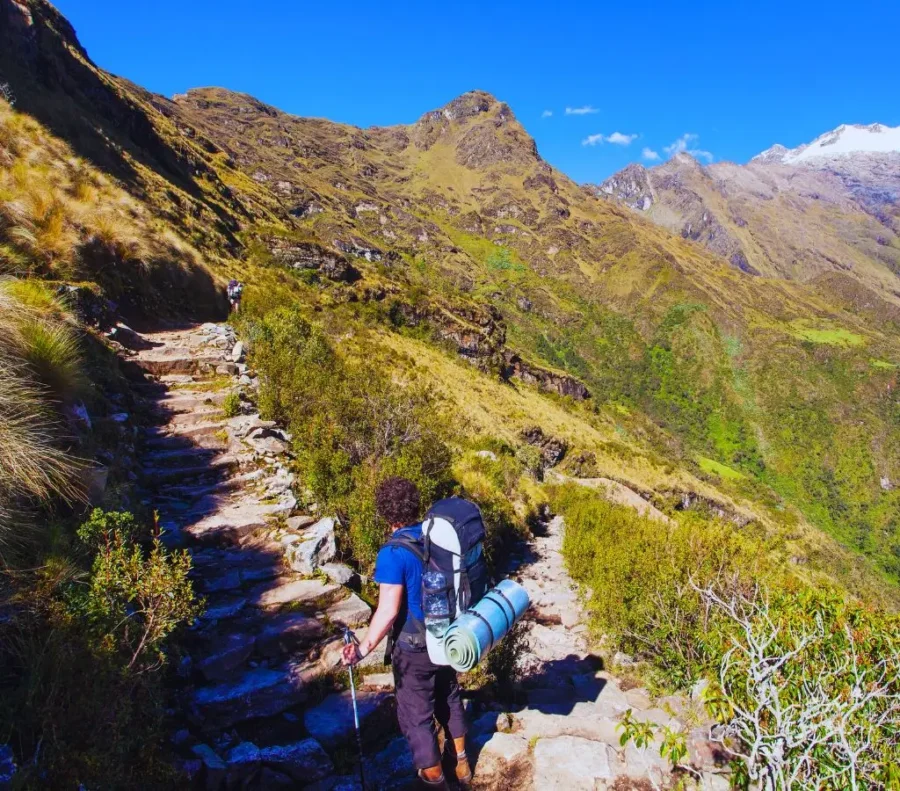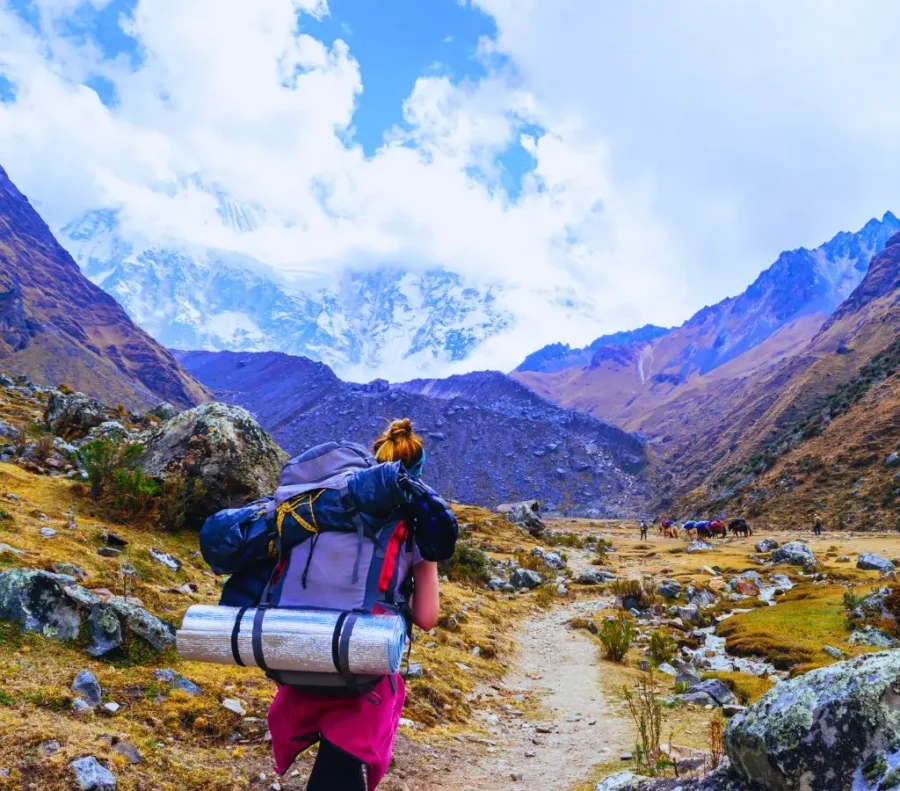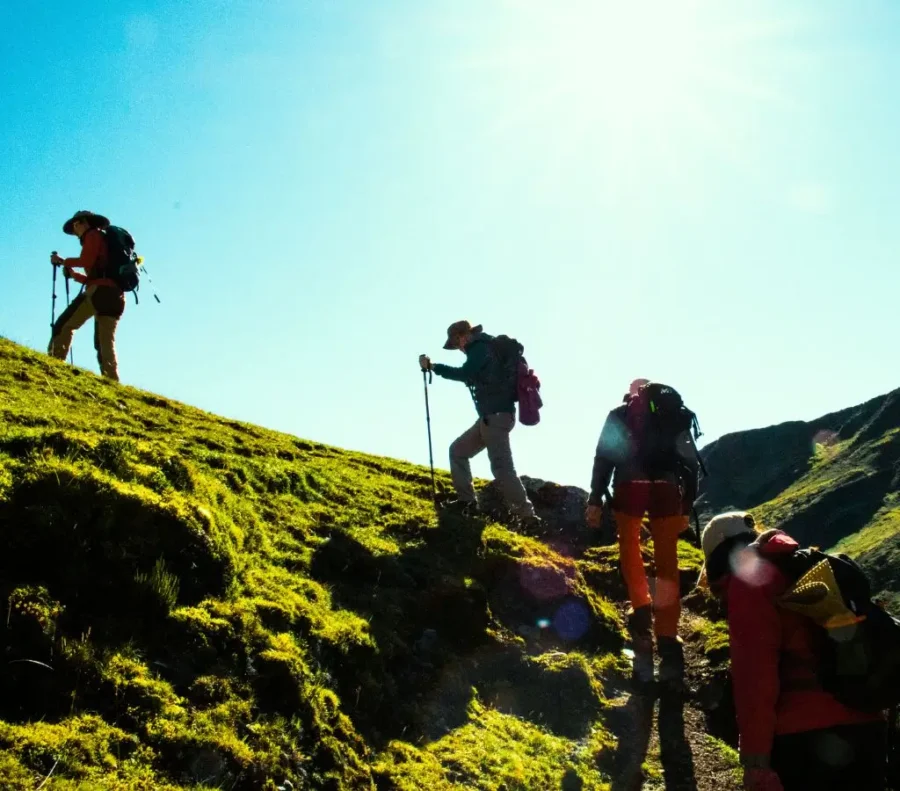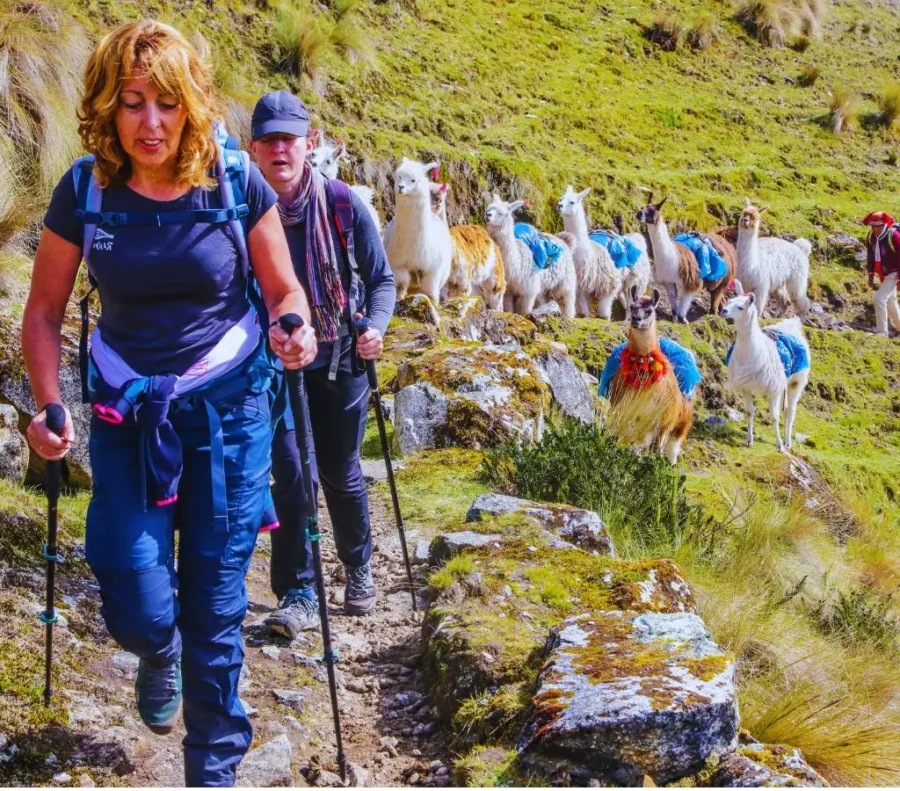
In Peru, trekking has become an increasingly popular activity among travelers seeking to explore its breathtaking landscapes. From the heights of the Andes to the lush Amazon jungle, Peru offers a wide range of options for trekking enthusiasts.
When choosing a trekking adventure in Peru, it is crucial to consider several factors, such as the level of difficulty, the time of year, the duration of the trip, and the desired destinations. Additionally, it is essential to adequately prepare to face the physical and environmental challenges that may arise during the adventure.
Table of Contents
Trekking, also known as hiking or trekking, is a recreational activity that involves walking through natural landscapes or scenic routes, typically in mountainous or rural environments ranging from mountains, forests, jungles, canyons, or rivers.
Unlike mountaineering, trekking does not require specific technical skills or specialized equipment, although it may involve long-distance hikes and varied terrain. As adventurers often say, traveling is not about reaching a destination, but about forging a path.
Trekking adventures can be classified into different difficulty levels, ranging from easy and accessible routes to more demanding challenges that require good physical condition and previous experience in outdoor activities. Some factors that influence difficulty include altitude, distance, terrain, and weather.
When choosing a trekking adventure in Peru, it is essential to consider various aspects to ensure a safe and rewarding experience.
Before embarking on a trekking adventure, it is important to assess your physical condition and abilities to ensure you choose a route that suits your capabilities. Because high altitudes and demanding terrain can pose additional challenges along the way, it is essential to be physically prepared, especially for high-altitude trekking.
Available time plays a crucial role in selecting a trekking adventure in Peru. Some routes may require several days to complete, while others may be shorter and can be done in a day. Therefore, you should consider how much time you are willing to dedicate to trekking and, above all, choose a route that fits your travel plans.
The time of year also influences the choice of trekking adventure, as the climate varies considerably by region and season. Therefore, it is important to research and analyze the weather conditions before traveling.
Keep in mind that in Peru, each region has different climates. The coast has a temperate and humid climate, with minimal rainfall. In the highlands, temperatures range from temperate to cold, depending on the months, as there are only two dry and rainy seasons.
In the jungle, the climate is rainier but also warm. Therefore, some routes may be more suitable to visit at certain times of the year due to factors specific to each locality, and you should also consider the influx of visitors.
Peru offers a variety of trekking options, ranging from cultural routes to thrilling adventures in nature.
Cultural treks allow you to explore ancient archaeological sites, remote villages, and indigenous traditions as you traverse historic trails and breathtaking landscapes. These routes offer a unique perspective on the country's rich cultural heritage and fascinating history.
For adrenaline enthusiasts, adventure treks provide exciting challenges in mountainous terrain, canyons, caves, and more, which are highly demanding. These routes promise an unforgettable experience filled with excitement and adventure.
Ecological treks take you through stunning natural landscapes, from tropical jungles to cloud forests and protected nature reserves. Along some routes, you can explore the country's unique biodiversity and learn about ongoing conservation efforts to protect these fragile ecosystems.
Peru is home to some of the world's most iconic and spectacular trekking destinations.
The Inca Trail is perhaps Peru's most famous and coveted trekking route. This ancient trail winds through stunning landscapes, passing Inca ruins, lush cloud forests, and towering peaks before reaching the legendary citadel of Machu Picchu.
It's important to note that this trek will take several days.
The level of difficulty is moderate to challenging.

The Salkantay Trek is a popular alternative to the Inca Trail, offering an equally impressive but less crowded experience. This route takes you through stunning mountain landscapes, glaciers, and turquoise water lagoons, culminating in the majestic citadel of Machu Picchu.
Its duration is 4 to 5 days, with a moderate to challenging difficulty level.

Lares Trek is an ideal option for those seeking an authentic and culturally enriching experience. This trek takes you through picturesque Andean valleys, passing through traditional villages where you can interact with local communities and learn about their ancestral traditions, walking alongside llamas and alpacas.
It's an adventure that leads you to discover the Inca citadel of Machu Picchu. This trek lasts for 4 days and 3 nights, with a difficulty level ranging from moderate to challenging, yet it offers an unforgettable experience.

Llama trekking in Cusco offers a unique and memorable experience, allowing you to explore the stunning landscapes of the Andes in the company of these charming animals. This eco-friendly experience provides an opportunity to connect with nature and local culture while enjoying the company of llamas.
The advantage of walking with these animals is that they are prepared to walk long distances without eroding the land and they know how to feed on leaves without uprooting plants like other animals do, which is why walking with these animals makes our trekking adventure unique.

Proper preparation is key to safely and satisfactorily enjoy trekking in Cusco. You should consider training beforehand, if you're going trekking it's recommended to go to the gym or take hikes so that your body can assimilate the walk.
Maintain a healthy diet, and if you're already in Cusco, try to rest and acclimatize as much as possible to be ready for your tour day.
It's important to have the right equipment to face the challenges of trekking in Cusco. This may include:
Safety is a priority when trekking in Cusco, so it's important to gather information beforehand about the trail conditions and necessary precautions before setting out.
Before traveling, you should organize the logistical aspects of the trek, such as transportation, accommodation, and necessary permits, all of which should be done in advance to ensure a smooth experience.
Generally, these preparations are made when hiring the services of a local guide or a specialized travel agency to provide assistance and guidance during the journey. It's better to hire these services, as the trail can be very long and we need an expert to guide us.
To make the most of your trekking experience, consider these practical tips:
Given that many trekking routes in Cusco reach high altitudes of over 4,000 meters, it is important to acclimatize gradually to prevent altitude sickness and maximize physical performance. This may involve spending a few days at lower altitudes before starting the trek and ascending slowly during the journey.
While enjoying the natural and cultural beauty of Cusco, always remember to show respect for local communities, their cultural heritage, and the natural environment. Avoid leaving litter, damaging archaeological sites, or disturbing wildlife, and be mindful of your environmental impact during the trekking experience.